Introduction
The interplay of light within architectural rendering is not merely a technical consideration; it is the very essence that shapes perception and experience. Mastering lighting techniques can elevate a visualization from a simple representation to a compelling narrative that resonates with viewers. By understanding the roles of ambient, directional, and accent lighting, architects and visualizers can create immersive environments that highlight design intentions and evoke emotional responses.
As the architectural landscape continues to evolve, the significance of effective lighting becomes increasingly paramount, influencing not only aesthetic outcomes but also client satisfaction and decision-making processes. This article delves into the critical techniques and tools necessary for achieving photorealistic lighting, exploring the nuanced relationship between light, surface properties, and viewer perception.
Through a detailed examination of practical strategies, the discussion aims to equip professionals with the knowledge to enhance their renderings, fostering deeper connections with clients and stakeholders alike.
The Essential Role of Lighting in Architectural Rendering
Architectural rendering lighting serves as a foundational element in design rendering, profoundly affecting the perception of space. It not only creates depth but also accentuates architectural features, shaping the emotional responses elicited from viewers. By mastering various illumination techniques, visualizers can produce compelling images that utilize architectural rendering lighting, imbuing them with realism and enhancing the overall effectiveness of 3D visualizations in architecture.
Different types of architectural rendering lighting—ambient, directional, and accent—each play pivotal roles in the rendering process:
- Ambient illumination establishes a base brightness.
- Directional sources create shadows and highlights, enhancing depth.
- Accent illumination draws attention to specific features or objects within a scene, facilitating communication among stakeholders about design intentions.
Understanding these distinct roles is crucial for crafting visualizations that utilize architectural rendering lighting to resonate with the intended design narrative. Moreover, the advantages of initial conceptual renderings—such as quick visualization, cost-effectiveness, informed decision-making, and support for an iterative design process—are enhanced through effective architectural rendering lighting techniques. The worldwide design illumination market is presently undergoing a growth rate of 5.5%, highlighting the growing significance of effective illumination in design practices.
For example, The Digital Bunch illustrates this expertise by mimicking natural illumination effects in architectural rendering lighting to create engaging visuals that captivate viewers, demonstrating how powerful illumination can transform building visualizations into moving experiences. This wider context emphasizes the importance of illumination not only in artistic aspects but also in maintaining heritage and honoring creativity within the changing environment of building visualization.
Practical Techniques for Perfecting Lighting in Renderings
To achieve optimal lighting in architectural renderings, several essential techniques should be employed:
Employ Three-Point Lighting: This traditional method utilizes three distinct light sources: the key light, fill light, and back light, to produce a well-balanced illumination of the subject. This technique not only enhances the visibility of design details but also adds depth and dimension to the presentation. As Mackenzie Brown, founder and CEO of Cad Crowd, states, “Effective architectural rendering lighting is crucial in architectural visuals, as it highlights key features and attracts potential buyers.” This principle is especially crucial in both interior and exterior presentations, where capturing the design’s essence is key to client satisfaction.
Manipulate Brightness: The intensity of illuminations significantly influences the mood of your renderings. Higher intensities can create dramatic, eye-catching effects, while lower intensities foster a softer, more ambient atmosphere. This adjustment is crucial, as research shows that illumination intensity impacts visual perception, shaping how viewers engage with the rendered space. Additionally, using a 360 camera, such as the Ricoh Theta Z1, is essential for capturing photographs to create environment lights, ensuring that your setup is as realistic as possible. Such high-quality renderings, particularly with architectural rendering lighting, are essential for effective communication of design intent, whether for interior or exterior projects.
Integrate Shadows: Incorporating appropriate shadows enhances realism and spatial depth. Ensure that your lighting setup casts shadows that are consistent with the architectural elements, which helps to ground the objects in their environments. For instance, utilizing planes with glowing materials can control brightness intensity and generate intriguing shadow patterns. The case study on Object-Based Lights illustrates this well; by enabling the Glow property in materials, you can transform ordinary elements into light-emitting objects, providing natural illumination with intensity falloff, further enriching the visualization.
Modify Color Temperature: Different light sources emit varying color temperatures, influencing the overall ambiance of the image. Warmer tones can evoke a sense of coziness, making them ideal for intimate interiors, while cooler tones are effective in creating a sleek, modern feel. Adjusting color temperature is a subtle yet powerful way to refine the emotional context of your visualizations, enhancing the connection clients feel towards the design.
Incorporating techniques such as enabling the Glow property in materials allows for the creation of light-emitting objects, enhancing product visualization by highlighting key features. Ultimately, mastering these techniques of architectural rendering lighting will improve the impact of your building visuals, attracting prospective buyers and effectively highlighting the design’s strengths while capturing the emotional essence of residential structures. By ensuring that both interior and exterior projects are rendered with high-quality detail and precision, architects can foster a deeper connection with clients, ultimately leading to greater satisfaction.
Mastering Surface Reflectivity and Texture for Enhanced Lighting
To optimize lighting effects in architectural renderings, meticulous attention must be paid to surface reflectivity and texture properties, which are crucial for effective design development and client evaluation:
Reflectivity Settings: Carefully adjust the reflectivity of materials within your rendering software. In architectural rendering lighting, high reflectivity settings produce a glossy appearance that can enhance highlight details, while lower settings yield a matte finish, reducing glare and softening the overall look. Significantly, enhancing surface reflectance is more effective than merely raising luminaire flux or enlarging window area for attaining quality circadian illumination. This balance is crucial for achieving a realistic representation of materials under architectural rendering lighting conditions, ultimately enhancing client understanding and communication.
Realistic Textures: Utilizing high-resolution textures that accurately replicate real-world materials is essential. As K.K. states, “Genuine textures not only enhance the visual appeal of your images but also greatly affect how illumination interacts with surfaces.” Recent advancements indicate that the quality of textures can dramatically affect the perceived realism of the scene, making this aspect a priority in architectural visualization and reinforcing the significance of 3D interior design images in preserving architectural legacy.
Bump and Normal Mapping: Incorporate bump or normal mapping techniques to create the illusion of depth on surfaces without the need for increased polygon counts. These methods enhance architectural rendering lighting to improve how illumination interacts with the surfaces, resulting in more realistic shadows and highlights. Such enhancements are vital for conveying the true character of materials and ensuring a convincing visual narrative, showcasing functionality and aesthetics to improve client satisfaction.
Furthermore, initial visualizations are a cost-effective way to explore design concepts, allowing architects to experiment with various ideas without committing significant resources. Furthermore, the case study named “Impact of Colored Walls on Indoor Illumination” demonstrates how wall color notably changes the perceived colors of items in a space, highlighting the significance of architectural rendering lighting and realistic textures in interior design. By concentrating on these essential aspects, architects can improve the quality of their visualizations, leading to more effective communication of design concepts and intentions, while supporting an iterative design process and preserving the legacy of their work.
Utilizing Natural and Artificial Light Sources Effectively
To effectively utilize both natural and artificial illumination sources in building visuals, several advanced strategies should be implemented:
Natural Light Simulation: Utilize the sunlight settings available in rendering software to accurately simulate the sun’s position and intensity, tailored to specific times of day and geographical locations. This enables a realistic depiction of how natural illumination interacts with architectural rendering lighting within architectural spaces. A. Ahmad et al. also reviewed various daylight availability assessment and energy simulation software applications, which can further enhance the accuracy of natural light simulation. High-quality architectural rendering lighting serves as a window into the future of your project, ensuring clarity and understanding of the vision behind the blueprints, which is crucial for making informed decisions.
Layering Light Sources: By skillfully combining natural and artificial sources of light, one can achieve a harmonious balance in illumination. For instance, using ambient illumination can effectively mitigate shadows cast by sunlight, enhancing visual comfort. This method is essential, especially considering recent discoveries where 11.7% of participants described their illumination as disturbingly bright, highlighting the necessity for careful examination of layering techniques. Moreover, the comprehensive interviews disclosed that 46.7% of participants highlighted the significance of visual comfort, further reinforcing the necessity for effective illumination strategies. These considerations are vital for engaging clients and fostering excitement about the project’s potential, as they enhance the clarity of the visualizations through architectural rendering lighting and support informed decision-making.
Light Color Matching: It is essential to match the color temperature of artificial illumination with that of natural light to maintain a cohesive atmosphere within the rendering. This practice not only contributes to aesthetic consistency but also supports the well-being of occupants, a factor highlighted in recent interviews where 18.8% of participants noted the importance of visual comfort. Seasonal conditions (23%) and changes due to the COVID-19 outbreak (11.5%) were also significant themes, indicating the evolving considerations in illumination design. High-quality visualizations that utilize architectural rendering lighting enhance understanding and decision-making, making this matching process critical. Furthermore, Anthony Babatunde Sholanke underscores the necessity of planning for architectural rendering lighting early in the design process, stating,
Therefore, planning for architectural rendering lighting should be introduced early in the design process to avoid incurring unnecessary cost and time wasting usually associated with late decision making in the building industry.
This viewpoint strengthens the strategic incorporation of illumination sources from the beginning of design projects, guaranteeing that the visuals act as a genuine glimpse into the future of the endeavor.
Integrating these methods into design visuals not only enhances visual quality but also conforms to the latest practices in illumination simulation, ensuring that plans satisfy both aesthetic and functional criteria. The study titled ‘Illuminance Range Considerations’ also provides insights into recommended illuminance levels, indicating that classrooms should ideally receive between 300-500 Lux of natural illumination, which can guide effective design improvements.
Advanced Tools and Techniques for Photorealistic Lighting
Attaining photorealistic illumination in architectural rendering lighting involves using advanced tools and techniques that enhance realism and visual fidelity, which are essential for clear communication with clients and stakeholders. Consider the following methods:
- Global Illumination: Implement global illumination settings within your rendering software to accurately simulate the complex interplay of illumination as it reflects and refracts off various surfaces.
As noted by Alin Moldoveanu in his work on architectural rendering lighting methods, this technique not only adds depth to the visual narrative but also captures the subtle nuances of natural lighting conditions, thereby enhancing client understanding of the design and facilitating discussions with builders and lenders.
- Illumination Portals: In interior environments, the strategic use of illumination portals can significantly enhance the efficiency of natural brightness entry, resulting in improved illumination quality.
These portals direct illumination into the space, effectively brightening shadowed areas and creating a more inviting atmosphere. Recent advancements in light portal technology have proven them to be especially effective, with case studies illustrating their capability to optimize indirect illumination based on observer position, thus leveraging direct illumination for superior visual outcomes. For instance, statistical analysis revealed that Participant 5 completed the implementation of these techniques in 150 minutes with 100% correctness, underscoring their efficiency in enhancing communication between architects and builders.
- Post-Processing Techniques: Employ post-processing tools such as Photoshop or After Effects to refine your rendered images further. Techniques like glare addition and contrast enhancement can transform a good image into an exceptional one, ensuring the final output resonates with the desired photorealistic aesthetic.
By concentrating on accuracy and detail, this careful method of architectural rendering lighting and visualization is essential for producing impressive building representations that not only meet the high expectations of today’s industry but also help in identifying design problems early in the process. Ultimately, these advanced visualization techniques empower developers by providing a compelling narrative that conveys the future potential of their projects. Reach out today, and let’s work together to bring your design visions to vibrant life.
Creating Mood with Lighting
To effectively create atmosphere in design visualizations, it is essential to utilize a variety of lighting techniques that can significantly influence viewer perception and emotional responses. Consider the following approaches:
- Dramatic Lighting: Implementing high contrast between light and shadow can infuse renderings with a palpable sense of drama, enhancing realism and emotional impact.
This technique highlights specific architectural features and guides the viewer’s attention to focal points, amplifying the overall effect of the design. Recent studies suggest that settings like 3100 K × 600 lx can create a relaxed, pleasant emotion in participants, underscoring the importance of illumination in shaping viewer experiences. In interior settings, dramatic illumination can accentuate textures and colors, while in exteriors, it can create striking silhouettes against the sky.
- Soft Illumination for Comfort: Utilizing gentle, diffused illumination is essential for evoking warmth and comfort, particularly in residential areas. Research indicates that warm white illumination improves mood more effectively than its cooler counterparts. The ‘Pleasure Level Analysis’ case study indicates that cool white illumination resulted in lower pleasure levels, demonstrating that warm illumination contributes to a more inviting atmosphere, making spaces feel more livable and welcoming.
This is particularly effective in interiors, where the goal is to create a cozy environment, as opposed to exteriors where softer lighting can enhance the ambiance of outdoor spaces.
- Color Illumination: The strategic use of colored sources can profoundly influence emotional responses. For example, warm colors foster hospitality, while cooler tones evoke professionalism or tranquility.
Recent research indicates that combinations such as yellow–blue and green–yellow lights positively impact comfort, whereas red–yellow combinations can increase anxiety and diminish feelings of peacefulness. Furthermore, insights from the Journal of Environmental Psychology detail the significance of color temperature on viewer experiences, performance, and arousal. In architectural rendering lighting, color lighting can be used to highlight specific areas in interior renderings, while in exterior settings, it can create a dynamic atmosphere that draws attention to architectural details.
By thoughtfully integrating these architectural rendering lighting techniques and considering their application in both interior and exterior contexts, architects can craft renderings that not only showcase their designs but also resonate emotionally with their audience, creating a more immersive and impactful visualization experience that reflects JSSVD’s commitment to intricate detail and emotional connection.
Conclusion
Mastering the art of lighting in architectural rendering is fundamental to creating compelling visual narratives that resonate with viewers. The intricate interplay of ambient, directional, and accent lighting serves not only to enhance the aesthetic quality of renderings but also to shape the emotional responses elicited from clients and stakeholders. By employing techniques such as:
- three-point lighting
- manipulating light intensity
- integrating realistic surface properties
architects can significantly improve the quality and impact of their visualizations.
Furthermore, the effective use of natural and artificial light sources, combined with advanced tools like global illumination and post-processing techniques, allows for the creation of photorealistic renderings that accurately reflect design intentions. The ability to simulate various lighting conditions and create mood through strategic lighting choices empowers architects to convey their vision with clarity and precision.
As the architectural landscape continues to evolve, the importance of effective lighting in renderings cannot be overstated. It enhances not only the visual appeal of designs but also facilitates informed decision-making among clients, ultimately leading to greater satisfaction and success in architectural projects. By prioritizing lighting techniques, architects can elevate their renderings, fostering deeper connections with their audience and ensuring that their work stands out in a competitive field.
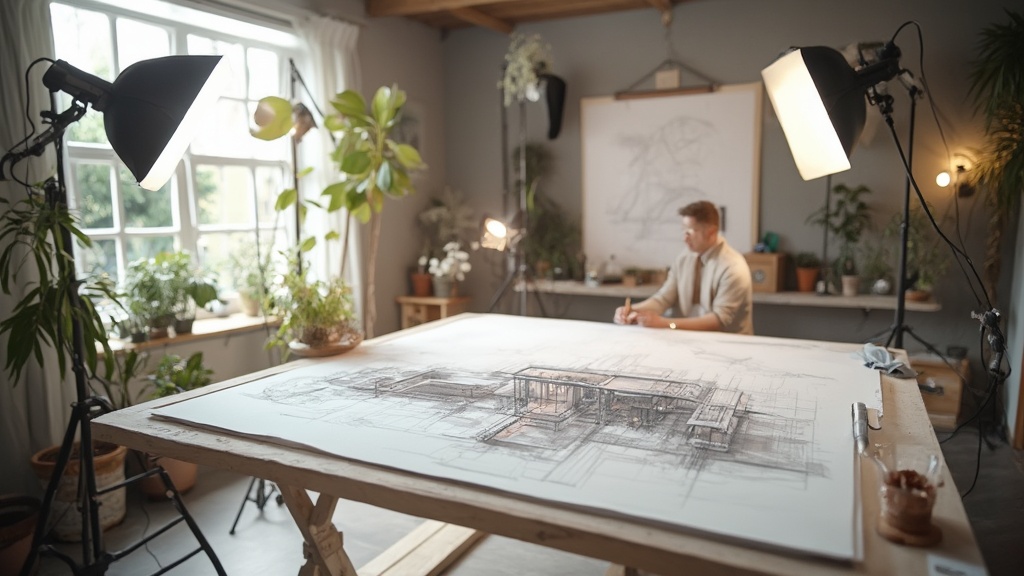
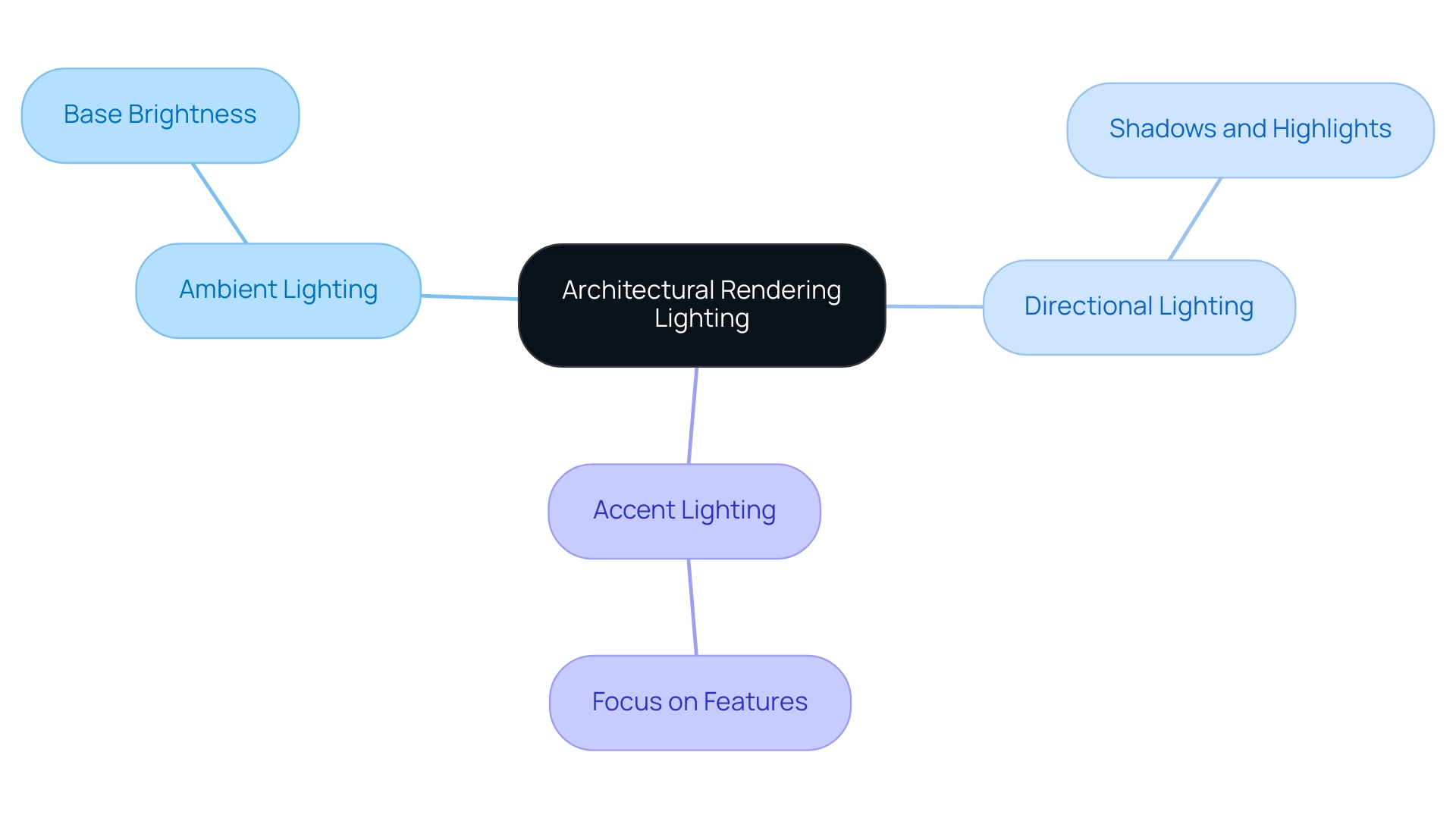
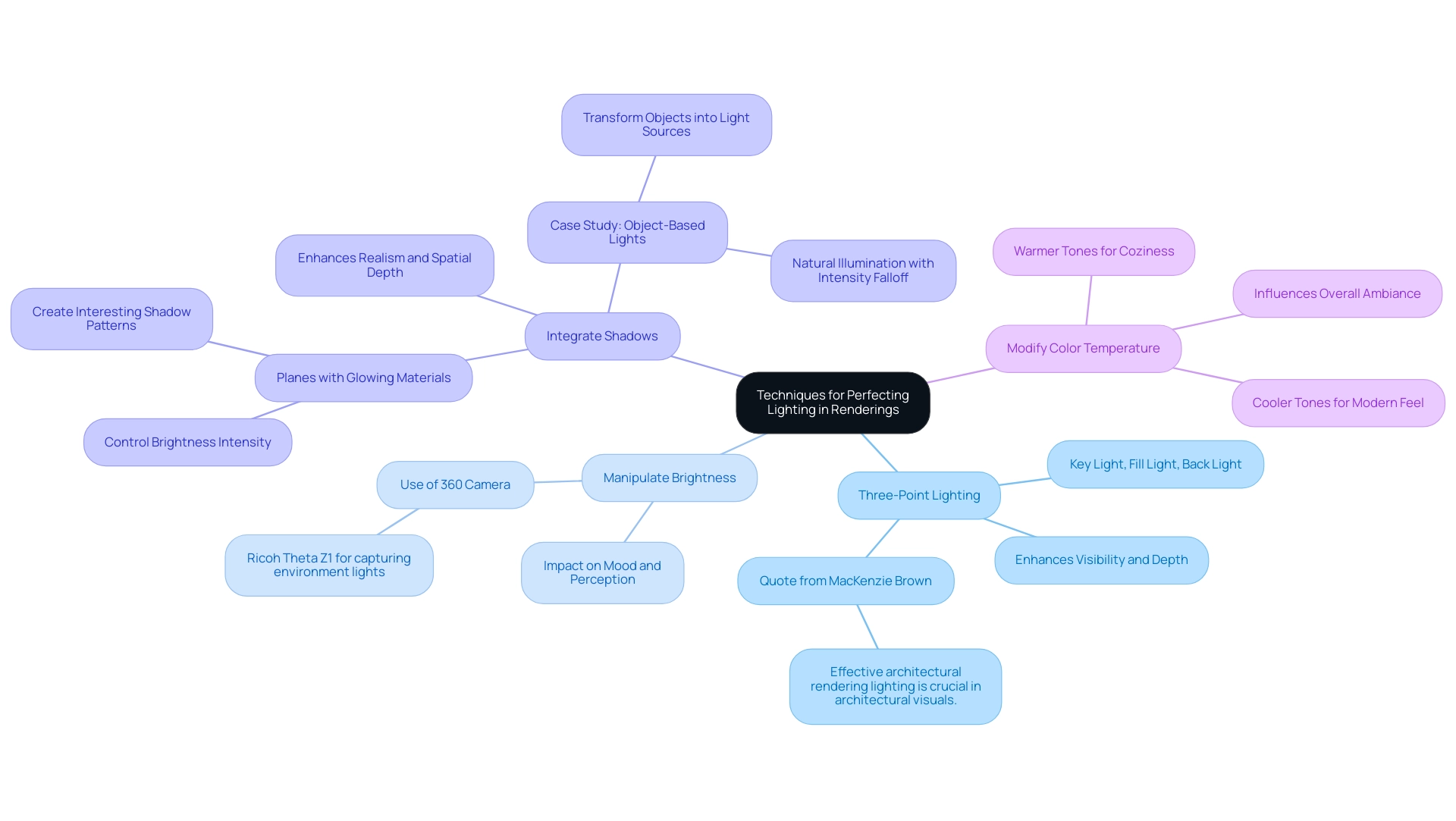
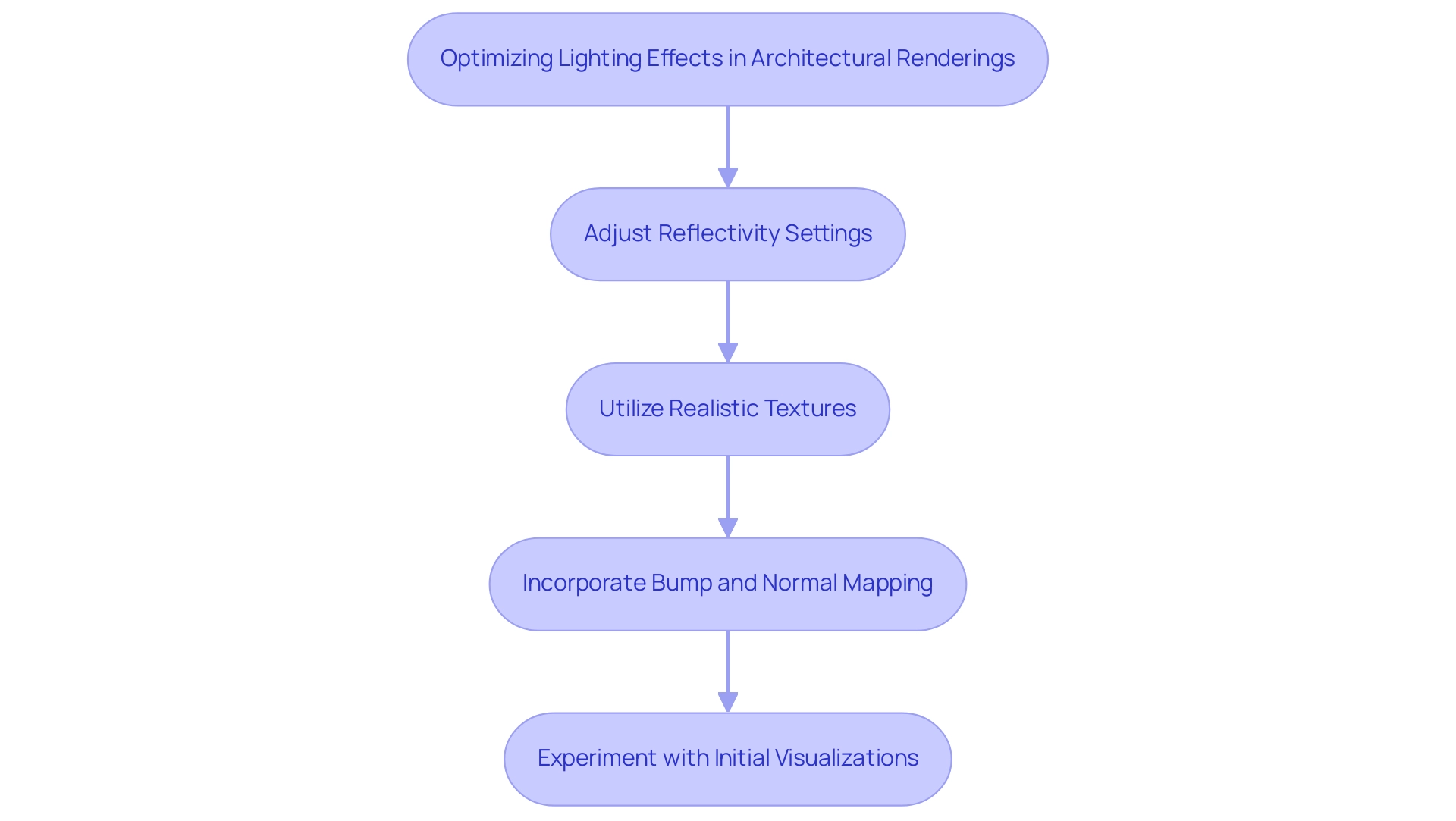
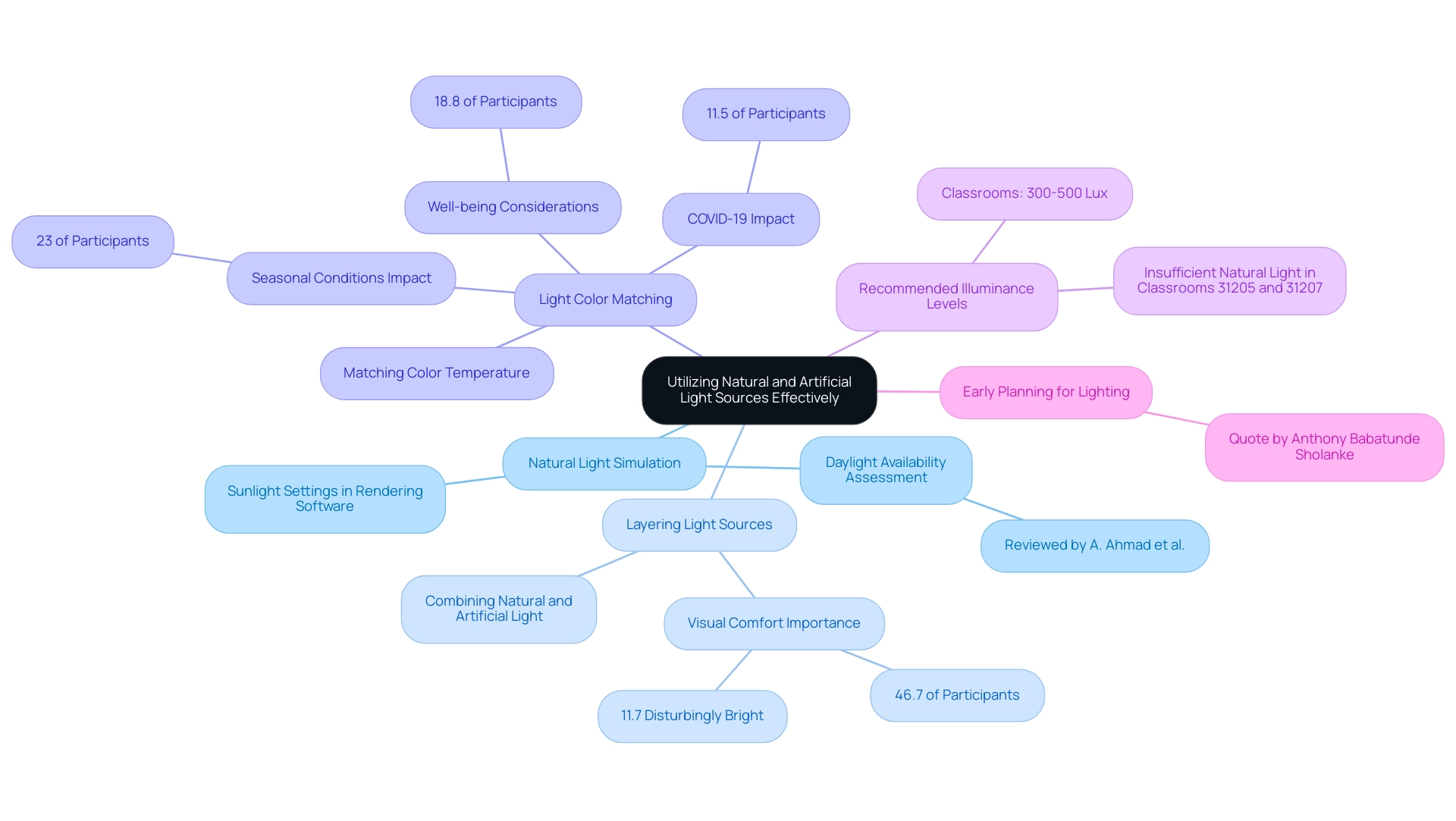
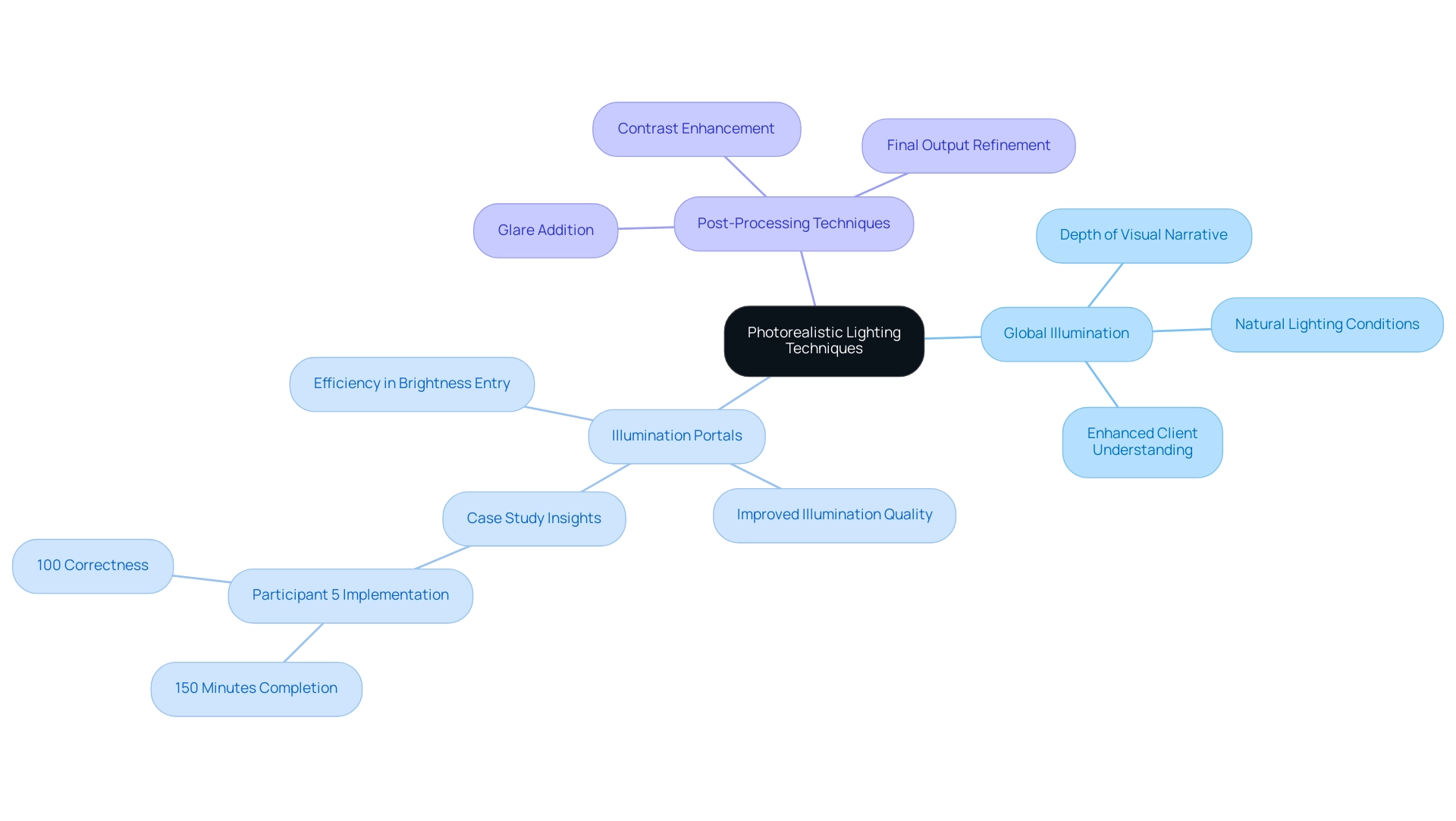
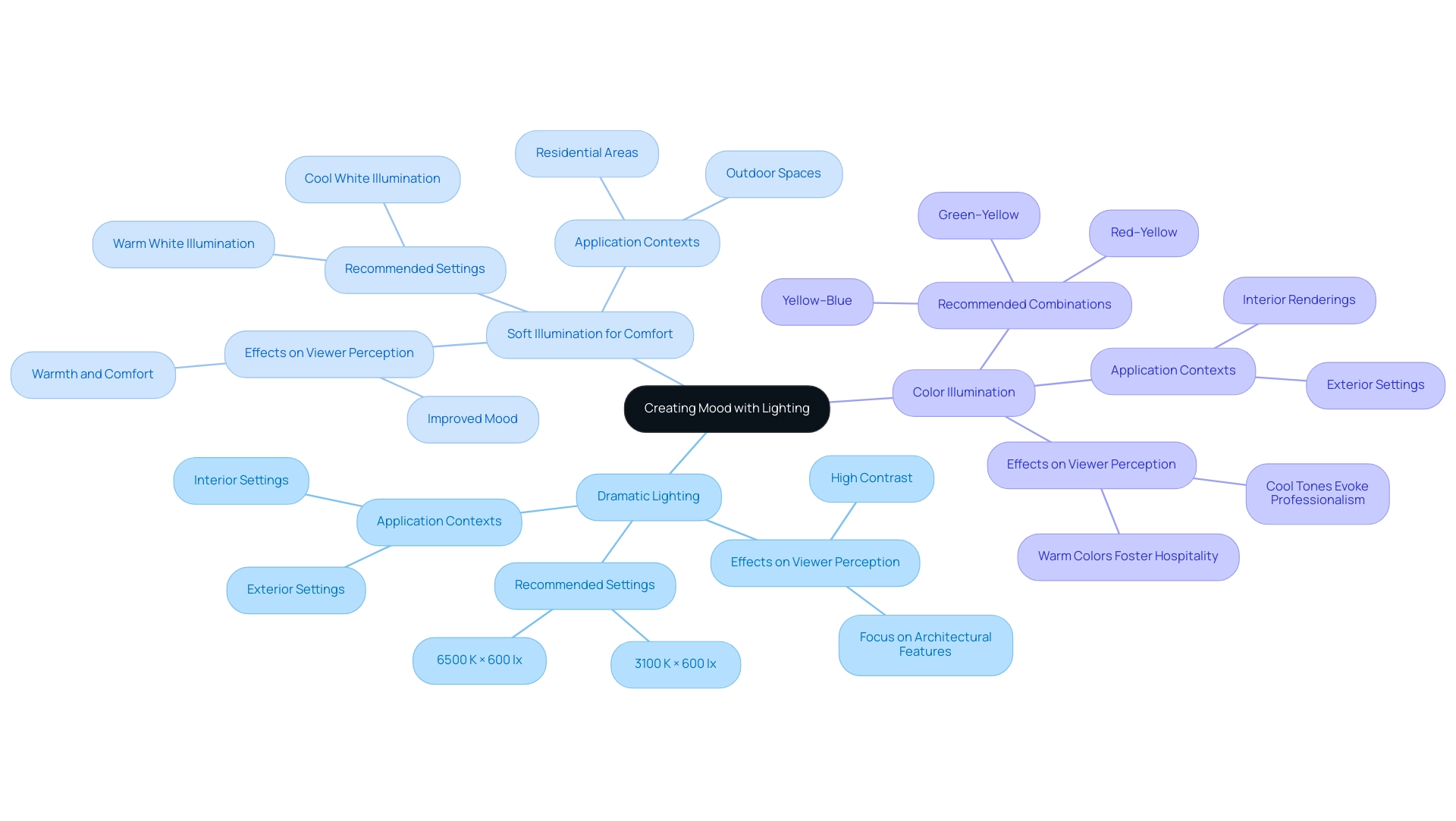
0 Comments